Streets for People / Is It Really Too Late For Bike Lanes on S. Roosevelt Boulevard?
Since FDOT first held public hearings in 2016 on rebuilding S. Roosevelt Boulevard between Bertha Street and the end of Smathers Beach to address sea level rise, locals, the City and FDOT have been going back and forth on what the road should look like when finished. The $24 million dollar 800-day project finally began at the height of season on January 30 this year. Like magic, overnight, with some paint and barriers, FDOT converted the 4-lane road to 2-lanes and construction commenced within days. Ever since the conversion, the 2-lane road has functioned smoothly. Traffic is flowing. No delays. No backups. No issues.
So, if the road is functioning well and we’ve got another almost two years to get use to the two-lane configuration, why in the world are we going back to four and three lanes like it was before, when the project is completed in the spring of 2025? It makes no sense. Especially in light of the fact that with much public support and local and State traffic experts agreeing, in May of 2021 City Commissioners voted 6-1 to reduce the four lanes to two, add protected bike lanes to provide separation from pedestrians accessing the beach along the promenade and to put in a middle turn lane for the condos. Well, because soon after the vote, the City’s Engineering Department told elected officials it would cost the City some money and was too risky because FDOT had deadlines that couldn’t not be met by more planning. So, no changes for you. That was that. Four lanes it is!
But that was 18 months ago. Since then, we’ve witnessed the 2-lane road functions just fine; we have a new bike-friendly Engineering Department; and the proliferation of fast moving e-bikes has prompted growing calls for separate facilities for bikes to protect pedestrians on the promenades. We’ve got almost two years until final striping on a newly completed roadbed will start. The City Manager should task his Engineering Department to spend a little money in designing some simple, low-cost, mostly paint potential alternatives to give the citizens and Commissioners what they asked for. I mean if FDOT could transform the road from four to two lanes in a day or so, how hard can this be? Let’s take another look at the history of this project, make the case for a bike facilities option, and discuss why it really might not be too late to make South Roosevelt safer for bikes, pedestrians, and vehicles.
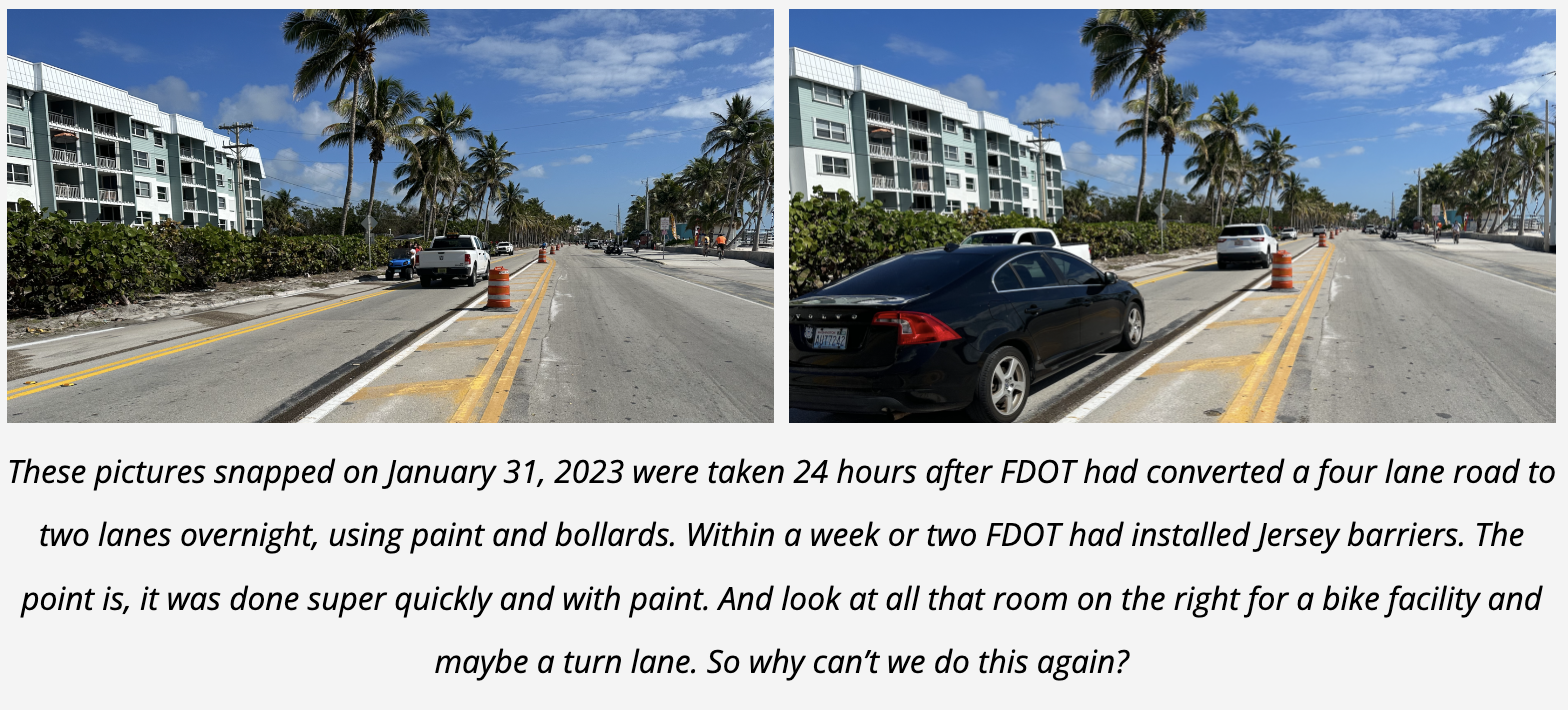
The Project Will Make S. Roosevelt More Resilient
This is a much needed resiliency project. We’ve all seen how the road retains water after a hard rain. And with sea levels rising the road is getting more and more vulnerable every year. The road is being raised up to 17.5 inches in some places. FDOT is repairing and closing retaining wall gaps, installing a water pump station system, and upgrading drainage for mitigation of tidal flooding. The existing promenade is being completely rebuilt as are the curbs and ramps. Three Pedestrian Beacons (like the HAWKS on N. Roosevelt) are being installed in front the Key West By the Sea, Margaritaville Beach House, and La Brisa. They’ll be repaving and then restriping the roadway (this is where the opportunity for change comes in) and installing new signage and markings.
From 2 Lanes Today to Four and Three Lanes When Done
Here’s the plans FDOT shared in January. Prior to construction S. Roosevelt Boulevard was mostly four lanes for its entire length. Going southbound as you approached the La Brisa condos the two southbound lanes merged into one for the eventual merge onto the two-lane Bertha. Going north from Bertha the road opened up almost immediately into two travel lanes plus parking. Plans call for the northbound lanes to be almost the exact same. But southbound the two travel lanes will turn into one lane before you get to Key West By the Sea. In the new four lane configuration the lanes will be 11 ft wide. When there are 3 lanes (about half the project) the northbound lanes will be 11 feetwide, and the one southbound lane will vary between 12-14 feet. When there are four lanes all lanes will be 11 feet wide.
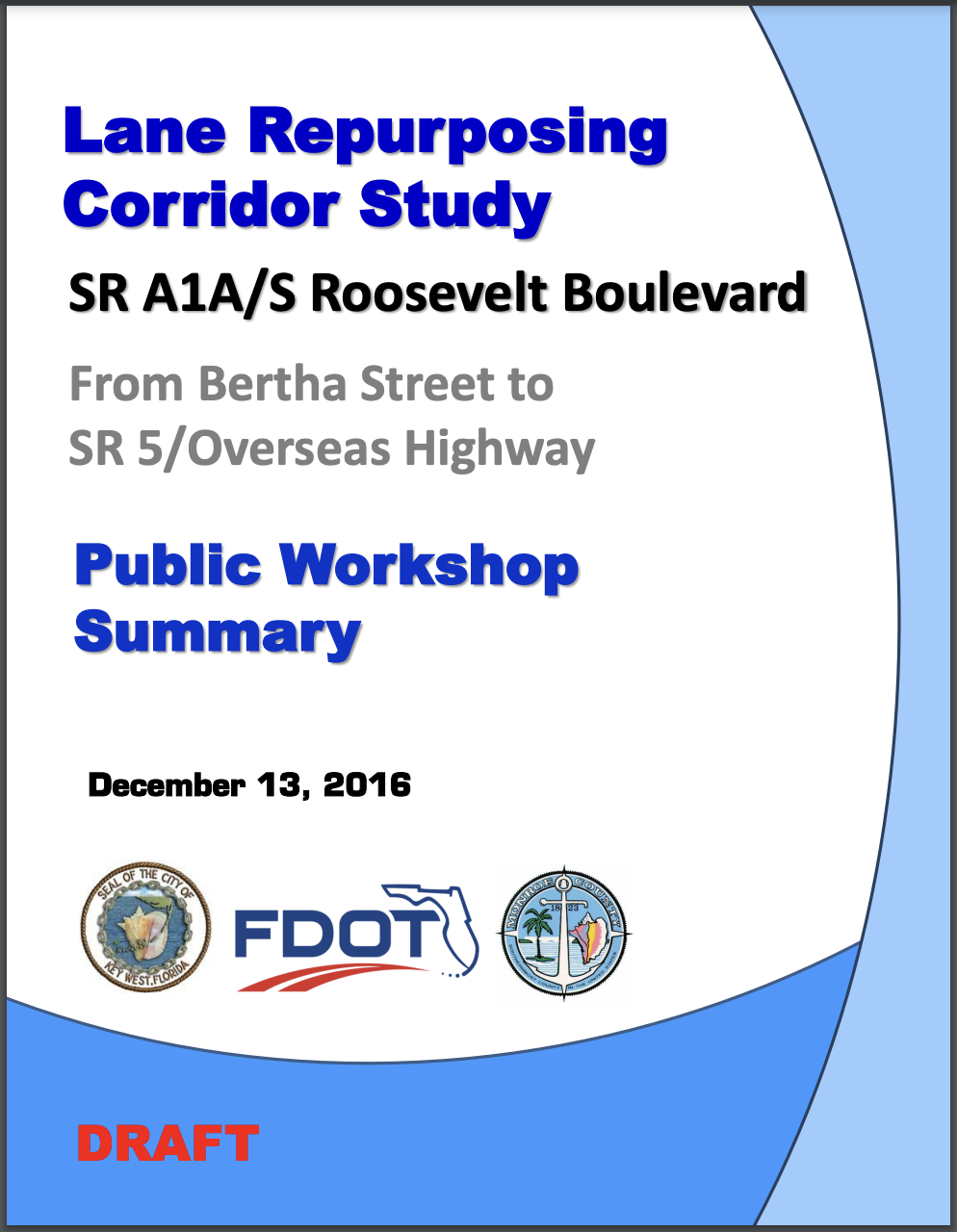
History of the Project Pits Car-Speed Vs. Safety
In 2016 FDOT held public workshops on their “Lane Repurposing Corridor Study” where they proposed options that included no change (4 travel lanes) and various alternatives for wide bike lanes and a middle turning lane. From the beginning FDOT and then City Engineer Jim Bouquet all recommended picking an alternative to the 4 travel lanes. FDOT studies showed the capacity wasn’t needed, speed wouldn’t be affected and that it would be safer for vehicles, bikes, and pedestrians. Most of the workshop participants agreed (see this story for details).
But there was a very vocal contingent of people that didn’t want any change. Just leave it alone they said. These people also cited not wanting to get stuck behind slow moving rubber necking tourists and beach goers and wanting extra capacity for fire trucks as reasons too. Alas the then City Commission in 2017 voted against their City Engineer, FDOT and the workshop participants and told FDOT to keep the road the same. Only Commissioners Weekley and Kaufman voted for the safer alternatives. Mayor Cates and Commissioners Romero, Payne, Wardlow and Lopez voted for the status quo.
Fast forward to May of 2021 and a new Mayor and City Commission voted 6-1 on a resolution rescinding the previous decision and asking for two travel lanes, a turn lane and protected bike lanes. Only Commissioner Wardlow dissented. Safety seemed to win. But the resolution had a poison pill embedded in it. The Commissioners said that they wanted this as long as the change in plans wouldn’t cost the City more money nor interfere with FDOT’s timeline for the project. Not surprisingly when then City Engineering Department Director Steven McAlearney and City Engineer Kelly Crowe got back to them a few months later, they lamented that yes, it would cost more money and it might jeopardize FDOT’s timeline and funding. So, they recommended no changes and that’s where we stand.
The Case – Is All That Capacity In Travel Lanes Necessary? No! And Separate Is Safer
Here’s what City Engineering Director Jim Bouquet said in 2017: “Choosing a two-lane option for South Roosevelt will better support a transportation system which is aesthetically attractive, functional, efficient, safe and environmentally sensitive.”
That hasn’t changed. Nor has the fact that FDOT’s analysis shows there isn’t a need for three or four lanes and that capacity and speed would not be affected. And the reality on the ground after six months of just one lane in each direction bears this out.
Here’s something else to consider. In response to the increasing number of complaints of fast moving e-bikes wreaking havoc on pedestrians, the City held an e-bike public workshop on March 2. Lots of people attended. Over and over, citizens recommended creating separate facilities on the N. and S. Roosevelt Boulevard Promenades for these vehicles. Here’s how Commissioner Sam Kaufman put it at the meeting:
“Why don’t we have dedicated bike lanes all over the city, so pedestrians and bicycles don’t have to mix. I recently visited Boston and NYC and they do this. Why isn’t there a lane next to the multi-use paths (promenades) because it doesn’t make sense to put them (bikes and e-bikes) in the highway either. In addition to car lanes there should be a dedicated lane for pedestrians and a dedicated lane for other vehicles – bikes and e-bikes. It’s a pretty wide space so why not separate?”
At the January 18 City Commission meeting when FDOT presented their construction plans Mayor Teri Johnston questioned this picture
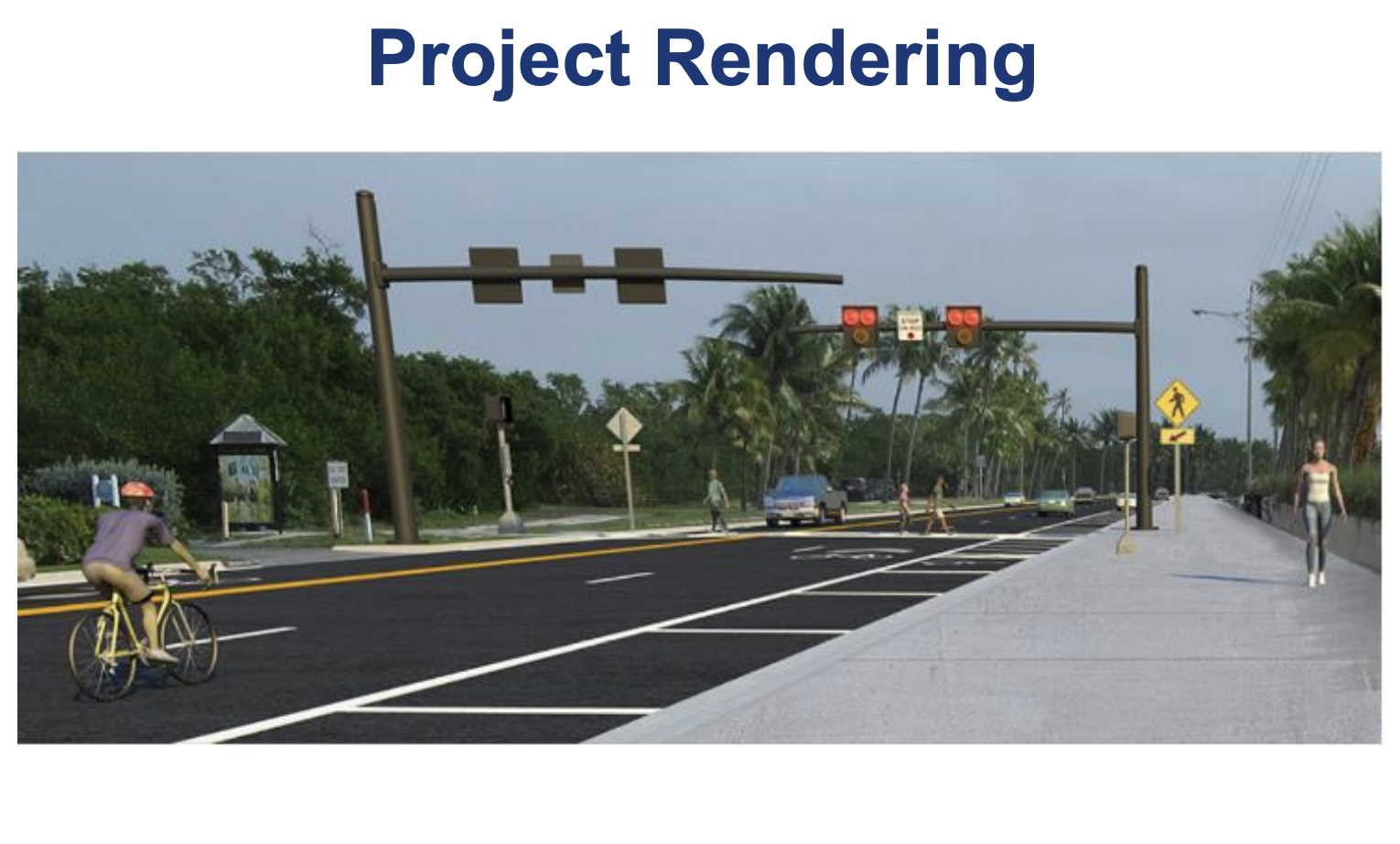
depicting a bicyclist in the travel lane. She said the presentation showed sharrows and asked if anyone ever uses the sharrows on North Roosevelt and then lamented there weren’t five foot bike lanes here, saying it was a major mistake to do this project without bicycle lanes. The Mayor said because vehicles are going 35 miles per hour no one on bikes or e-bikes are going to use the road as depicted in the picture because it isn’t safe and so they are going to ride on the sidewalk instead.
Commissioner Kaufman jumped in and said he agreed 100% but that it wasn’t FDOT’s fault because of the history we discussed above. The Mayor and Commissioner Kaufman are both right. And S. Roosevelt Boulevard’s rebuilding is golden opportunity to do just that.
What Some Alternatives Might Look Like
Here are some alternatives that FDOT presented in 2016.
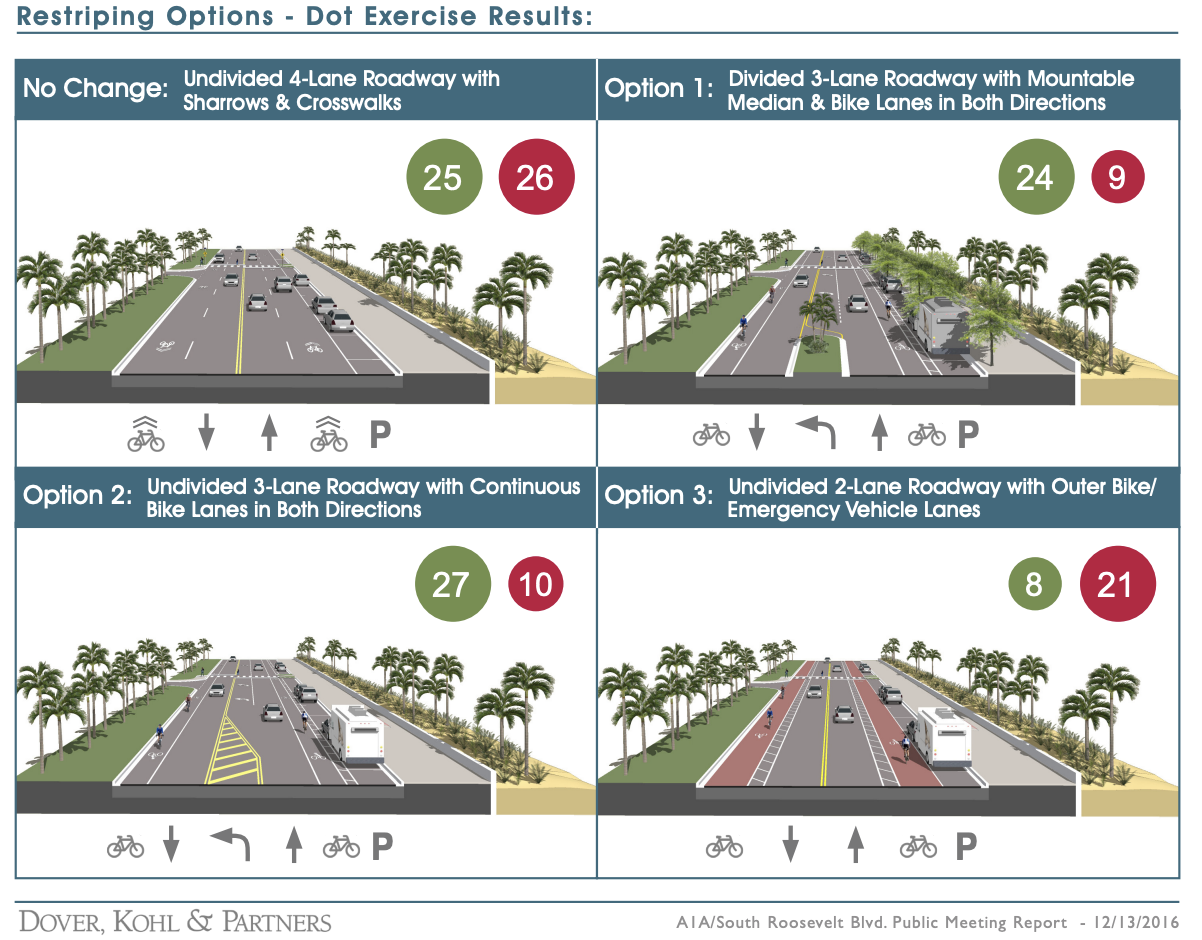
Given almost seven years have passed and that there are likely some additional constraints, alternatives drawn up today might be a little different. For example, in order to accommodate both a bike facility and a turn lane for the condos and hotel, maybe some beach parking needs to be moved from next to the sidewalk to the bridle path. But we won’t know until we sketch out some new ideas.
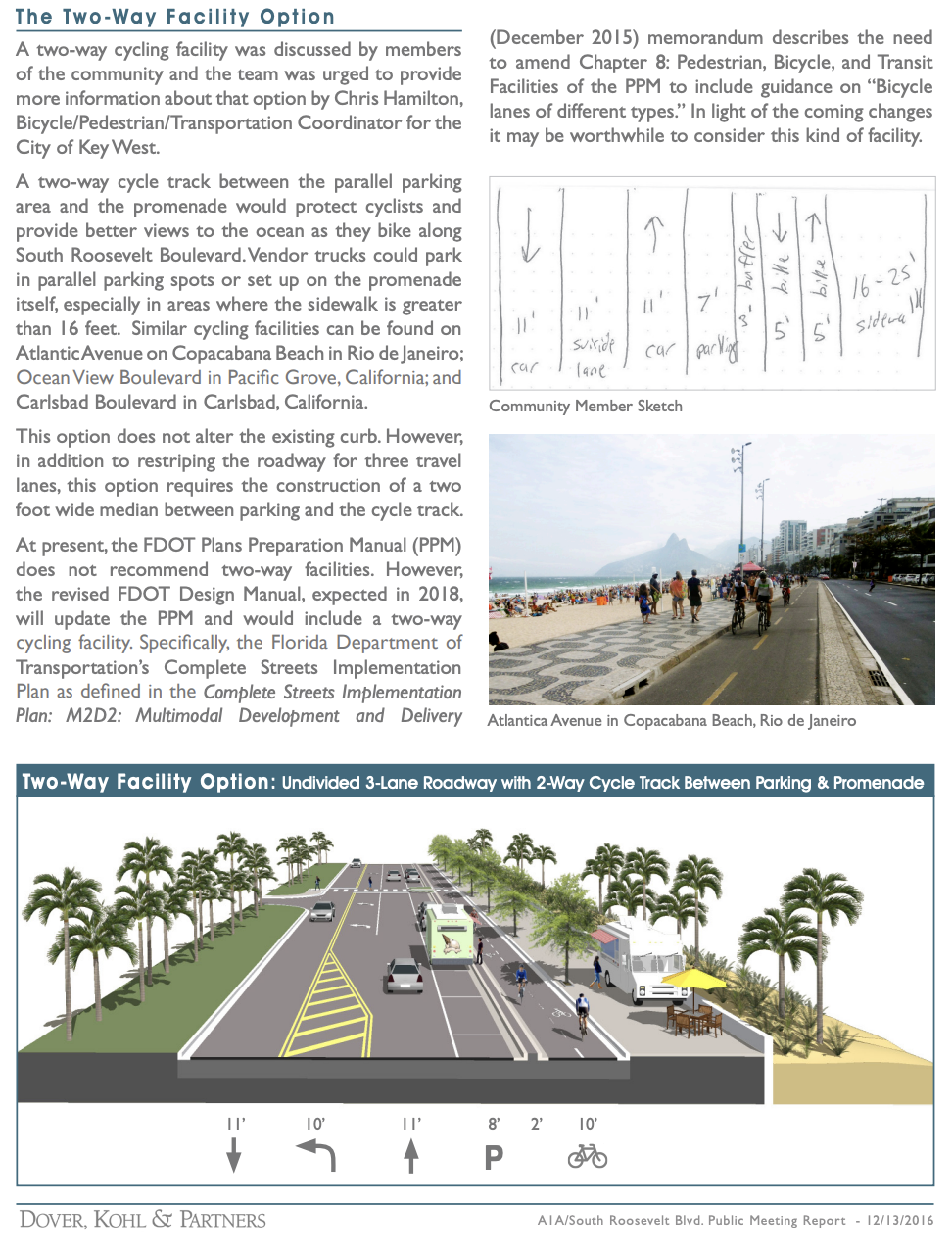
Tangent – The Mysterious Missing Sidewalk
Plans call for FDOT to build a sidewalk in front of the La Brisa condos and the Margaritaville Beach House hotel. When this is done, the City plans to construct a sidewalk on the La Brisa side of Bertha Street so that the South Roosevelt sidewalk connects up with the sidewalk that currently ends near the intersection of Atlantic Boulevard. But the Key West By the Sea residents objected to a sidewalk on their side of S. Roosevelt. Come on man, what gives? If Key West By the Sea wants a turn lane, they should allow FDOT to build a sidewalk in front of their building. That way, one could walk all the way from La Brisa or the hotel to the Airport or Benihana without crossing the highway.
Why It Isn’t Really Too Late
I copied this quote from the February, 24 Key West Citizen Voice:
“Peak season and traffic on the South Roosevelt Boulevard section that is now only two lanes because of construction is moving along nicely! Our former city manager (Greg Veliz) and a few long term commissioners recommended against FDOT beautifying and redoing (at no cost) this area to make it pedestrian and cyclist friendly because it would impede automobiles. They voted for automobiles, traffic, speed, no changes, and they were wrong. We are stuck with the current plan; remember who voted against these improvements.”
But are we really stuck? The question is, if two lanes work, why do we need extra travel lanes? And if we don’t, can we, using mostly paint, fashion a two-lane road that can then also accommodate a bike facility – you’d need at least 8-10 feet, maybe more, out of those reduced lanes? And then is there also enough room for a turn lane for the condo’s? If you walk or ride your bike out there today, there sure seems like plenty of space where you could have separate facilities for vehicles, bikes, and pedestrians. And that would be safer for everyone.
We’d ask the City Manager to task his bicycle friendly, current Engineering Department staff to meet the spirit of the Commission’s May 2021 resolution and to give us some low-cost options for using paint to make the road safer by reducing it to two travel lanes instead of the planned four/three and to see if those turn lanes for the condos and hotel can be accommodated too. We have faith in the new Engineering Department team that includes Director Gary Volenec and Multi-Modal Coordinator Ryan Stachurski to come up with some ideas as they’ve demonstrated progress on bicycle issues here, here, here, here and here.
A Safer S. Roosevelt and Smathers Beach Is Better for Everyone
The City needs to give this one last try before it really is too late. And this time, everyone involved should concede that it is okay if it costs us some money. Being penny wise and pound foolish on a project that will last a generation is nuts. Building a safer S. Roosevelt for vehicles, bicycles, e-bikes, pedestrians, and beach goers along Smathers Beach, one of our prime tourist attractions, will be good for everyone. Hey, maybe you can get the TDC to kick in some money for the changes.
# # #
Chris Hamilton is founder of the local advocacy group Friends of Car-Free Key West & Duval Street/Historic Downtown. Subscribe to the blog. Follow on Facebook and Twitter. Support ($) our local journalism here. A native of the District of Columbia, where for a couple decades+ he led nationally renowned efforts promoting transit, bike, walk and smart growth for Arlington County, VA’s DOT. Chris has lived in Key West since 2015. He lives car-free downtown and works and volunteers for a few non-profits. You can find three years’ worth of KONK Life Streets for People column articles here and here and the 10 most recent stories below:
- Hunting for Parking: Making the Case to End Free Parking for Visitors In Downtown Key West, July 21, 2023
- PeopleForBikes Says Key West Is a “Great” Bicycling City and Ranks It #17 in U.S.A., June 29, 2023
- New Staples Avenue Bike/Ped Bridge Coming This Fall, June 23, 2023
- New Garden View Apartments Residents Being Provided Bus and Bike Incentives to Go Car-Free, June 16, 2023
- City Wants Your Help In Locating New Bike Parking, June 2, 2023
- Helping Islanders Go Car-Free Or Car-Lite Can Help With Our Affordable Housing Crisis, May 18, 2023
- Brand New Bike Lanes Coming to United and South Streets, May 5, 2023
- New “Workforce Express” Key West Transit Service Begins May 15 Between Stock Island and Bahama Village, May 3, 2023
- County Officials Reserved On-Street Parking Stands In Way of Completing Southard Street Bike Lane, April 21, 2023
- The Canary In Our Florida Keys Coal Mine Is Our Fragile Water System. Here’s 10 Things to Reign In Overtourism and Overdevelopment that Killed the Bird, March 31, 2023

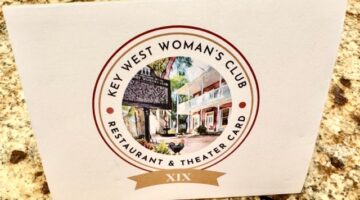
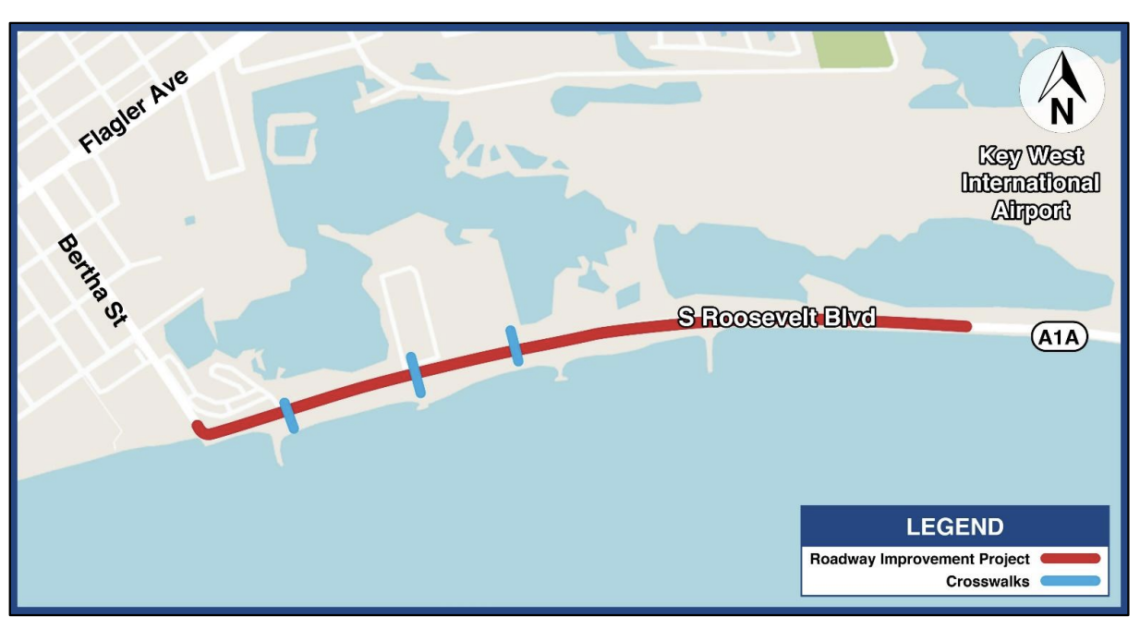


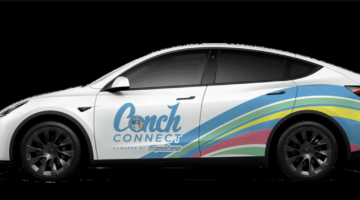
No Comment